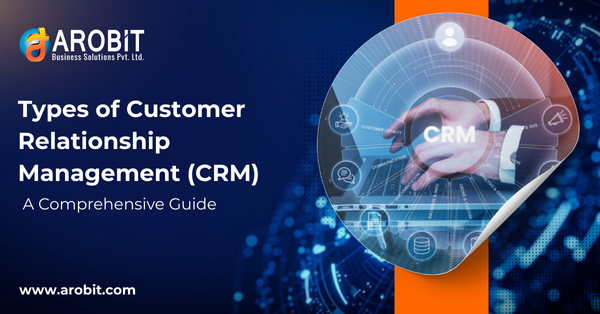Choosing the right software development partner is perhaps one of the most important decisions you'll make. In this fast-changing digital landscape, a custom software solution is no longer an indulgence; it's an absolute requirement for businesses to have an edge over others. However, how do you ensure that you're making the right decision, with many software development companies calling out to you for attention?
Sounds good, doesn't it? However, to see the desired results, you need to choose the right partner, a software solutions provider who acknowledges your vision and turns it into reality. While selecting a software development company, one should be on the lookout for not just anybody who knows how to code; it should be a strategic partner that shares your business vision and can carry you through the tricky endeavor of custom software development.
This guide will provide you with a step-by-step guide to get through the options and make an informed decision if you are probably choosing between software development companies from India and a local custom software development firm. You will understand how to identify needs, develop budgets, evaluate potential partners, and ensure successful partnering. Let's get started!
Step 1: Define Your Project Requirements & Goals
Before you begin your hunt for a software development company, make sure to fully understand your project requirements and goals. This will be your guiding principle for finding the right partners.
Why is clarity in requirements critical?
- Avoid scope creep: If requirements are not fully defined, this can lead to a runaway project, resulting in a budget blowout and a missed deadline.
- Ensure alignment: With this level of clarity, both parties know they are operating on the same wavelength and agree on the requirements and outcomes, thus preventing misunderstandings and any consequent rework.
- Enables better estimating: Accurately defined scope documents allow potential partners to submit very precise cost and time estimates.
Questions to ask yourself:
- What problem do you want to solve? Please specify the pain point that your software will address.
- What are your must-have key functions? Describe the specific functions and features your software must have.
- What platforms would you need? Is it web, iOS, or Android? Identify the platforms preferred by your target audience.
- What integrations do you need? Identify third-party systems your software will need to integrate with.
- What are your expectations regarding performance frequency and scale? What speed are you expecting? How scalable should it be? What are the expectations regarding reliability?
- What are your security requirements? What measures do you want to take to ensure that sensitive data remains secure?
Creating a detailed scope document:
- A project purpose clearly specified.
- The feature and functionality list
- User stories covering the way users are engaging with the software.
- Wireframes/mockups representing what the screen might look like.
- Technical specifications, covering platform requirements and integration details.
Step 2: Determine Your Budget
Budgeting is critical to the software development process, which is something to consider early on. Knowing your bottom line will help you narrow down your candidates and not waste time with companies beyond your buying power.
Why is budgeting an early consideration?
- Encourages realistic expectations: A solid budget allows you to get an actual understanding of what can be achieved within your monetary capabilities.
- Keep your search knowledgeable: Knowing your budget allows you to concentrate on companies that offer services for prices you can afford.
- Strengthens your hand at the negotiating table: A concrete budget empowers you to negotiate the cost itself and terms of payments more effectively.
Factors that influence software development costs:
The cost of software development can be affected by:
- Complexity of the project: Advanced features normally make a project more expensive.
- Choice of technology stack: The chosen programming languages, frameworks, and tools may tend to add to expenses.
- Size of team and location: The size of the development team and its location can play a major role in pricing.
- Time frame: A short period intended for the completion of the project needs to put in additional resources at a cost.
- Continuous maintenance and support: Include the cost of maintenance, updates, and support thereafter.
The various pricing models include:
- Fixed price: This model has a defined cost for the entire development and fits well in those cases where the requirements and scope are highlighted well.
- Time and materials: This model charges based on actual resources and time taken for the complete development. It is more flexible in nature and is preferable for projects where requirements are likely to change in course.
- Dedicated team: A dedicated team model gives you a set of developers who work exclusively on your project. This works best for long-term projects with certain amounts of collaboration and flexibility.
Tips for estimating the budget would have to include:
- Research comparison with industry averages: Look at industry averages so that you can get a sense of average costs and aspects related to the software development industry.
- Request multiple quotes: Ask several development companies for quotes for comparison purposes.
- Include a contingency estimate: Reserve a certain percentage of the budget for unforeseen costs.
Stage 3: Find Candidates That Are Software Development Companies
At this point, you are ready to start your search for potential software development companies. You have a clear picture of the kind of scope expected out of the project, as well as a budget for it. Lots of options should be researched, and a long list of candidates should be drawn up for evaluation.
Where to look for prospective companies:
- Online directories: Websites like Clutch and GoodFirms list software development companies as well as provide client reviews and ratings. They help you filter companies according to location, industry expertise, and service offerings.
- Referrals from your surroundings: Requests from co-workers, friends, or business associates for recommendations. Personal referrals can give you good reasons to find reputable companies.
- Industry events: Industry conferences, trade shows, or networking events are great occasions to meet your potential partners and educate yourself on their capacities.
- Searching online: Use Google and other search engines to identify software development companies that match your criteria. Specify keywords such as "custom software development," "software development services," or "software development companies in India.
Make a long list of possible candidates:
While doing extensive research, create a list of companies that might be suitable based on their websites, info from lists, and initial impressions. Feel free to put down different kinds of companies, for at this stage of your research you will be narrowing down options in the next step.
Step 4: Assess and Shortlist Companies
Now the long list of prospective software development companies comes in handy. It's time to assess and shortlist the most promising candidates. This last step involves a more thorough investigation of how capable and experienced each company is, as well as how well their company culture aligns with yours.
Criteria for Assessing Companies:
- Technical Proficiency: Check the technical expertise of the company about technologies associated with your project. Experience in issues regarding specific programming languages, frameworks, and platforms.
- Industry Experience: Check whether the company has worked in the same industry with similar projects. Experience in the specific industry in question is a plus.
- Portfolio and Case Studies: Go through the portfolio of the company and studies of their past work. Look for projects related to your company's offered skills and experience.
- Client Testimonials and Reviews: Read about client testimonials and reviews about the company in mind for assessing the generic estimation of satisfaction or discontentment. Note positive and negative feedback.
- Communication and Collaboration: Evaluate the company's style of communication and attitude towards project management. A good partnership involves clear and consistent communication.
- Development Process: Inquire about what the company's development process is and the methodologies it implements. The agile method is flexible and favors an iterative approach.
Shortlisting your best candidates:
Using your evaluations, narrow down the list of deserving candidates to a handful that meet your key criteria. These are the companies that will move into the next phase.
Step 5: Interview and Due Diligence
With candidates appropriately shortlisted, interview them and ensure due diligence is conducted. This proceeding permits firms in-depth dives into appreciating their candidates' capabilities, culminating in the verification of claims made by the candidates.
Interview Preparation
Before interviewing any company, be prepared with a series of questions to present to it. Some primary queries could include:
- Technical Queries: What technologies does the company have experience in? How do they go about solving certain problems? What coding standards do they have?
- Process Queries: What methodology does the company employ in its development? What is the project management tool? What is the communication practice?
- Project Management Queries: What experiences does the company have managing projects similar to yours in terms of scope and complexity? What risk management strategies has the company adopted, and how does it ensure the quality of the outputs?
- Team Structure Queries: What team will be working on your project? What roles and responsibilities will the members of the team carry, and what is their experience working together?
Verify References and Verify Claims
Interviewing is one thing, but equally important, make it a point always to obtain references and verify claims made by these companies. Make sure to contact past clients and get their feedback on the company's performance, communication, and level of satisfaction.
Culture Fit
In the end, check how your company fits culture-wise with the software development company. A good culture fit might provide a starting ground for better and more effective communication, cooperation, and ultimately, overall project success.
Step 6: Negotiate and finalize the contract.
Once you have selected the right software development company, it's time to negotiate and finalize the contract. This is an important step that will serve to protect your interests and also pave the way to a clear understanding of the project's scope, timelines, and payment terms.
Key elements of a software development contract:
- Scope of Work: A detailed description of the objectives, features, and functionalities of the project.
- Timeline and Milestones: A timeline with a schedule of milestones and deadlines.
- Payment Terms: An outline of the payment schedule in amounts and due dates.
- Intellectual Property Ownership: A clause detailing who owns the IP rights concerned with the software.
- Confidentiality clauses (NDA): The provisions for protection of your confidential information.
- Termination Clauses: Conditions under which either side can terminate the contract.
- Warranty and Support Terms: Details on the warranty period and the scope of ongoing support.
Getting a legal review of the contract:
Before you sign the contract, it's prudent to take it to a lawyer to examine. An attorney would be likely to identify any potential risks or loopholes and make sure that your interests are protected.
Step 7: Onboarding and Communication
Next, onboard the development team with contracts finalized and set clear channels for communications. This lays the foundation for a successful and collaborative partnership.
Establish communication channels and reporting procedures:
- Identify the primary channels for communication (e.g., e-mail, Slack, project management software).
- Create a cadence of regular meetings to update and discuss project progress.
- Describe reporting procedures for the updates necessary to track progress and flag issues.
Define roles and responsibilities:
The roles and responsibilities of each member of the work team, on your side, together with the developer company's side, will be articulated. This aims to eliminate confusion and secure accountability.
Setting up project management tools:
Use project management tools for task tracking, deadline management, and collaboration. Popular options are Jira, Asana, and Trello.
Scheduling regular meetings and progress updates:
Routine meetings and progress updates are very important in tracking progress and addressing any problems arising. Meetings become more productive when planned well in advance and with all necessary members present.
FAQs
Q1: What's the difference between onshore, nearshore, and offshore software development?
A1: Onshore software development is when you deal with software companies in your own country. This way, it provides for better communication and cultural compatibility.Nearshore software development is when one outsources to a neighboring country for its cost benefits with a more similar time zone.Offshore software development means working with a geographical partner that is much farther away, which is mainly advantageous because it cuts down on costs; however, this must be weighed against certain issues regarding communication and cultural aspects.
Q2: How can I protect my intellectual property when working with an outside development team?
A2: Regarding intellectual property protection, the contracts have to have clear terms on ownership and what is admissible based on those terms.
- One must always ensure NDAs are signed to protect sensitive information.
- In the contract, it must be clear about the ownership of the copyright attached to the developed software.
- Also, there should be a code ownership clause that states who has full ownership over the delivered code.
Q3: What are the common red flags to watch for when evaluating a software development company?
A3: Several red flags can make a development company suspicious.
- Typical issues include poor communication, such as delays, issues concerning language, and vague answers.
- Lack of transparency in quotes, processes, or credentials.
- Unreasonably low prices or promised super-speedy project delivery.
Conclusion
Finding the right software development company is among the most impactful yet challenging decisions for your project's success. Following up on these steps allows you to sift through options, evaluate potential partners, and foster smooth and productive collaboration in the process. Be sure to outline your needs, set a budget, research thoroughly, and communicate.
In this regard, a very confidential and true description of a software solution provider could either bring you one step closer to success or drag you into its muddy chaos.
Make an Informed Software Development Decision
Still exploring software development? Learn the fundamentals of What is Software Development and Why Does Your Business Need It? To see how it can transform your business. If you're searching for top industry players, browse our Top 10 Software Development Companies in India to compare and choose the best.








